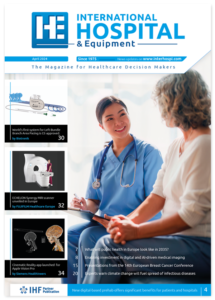One-third of patients with low flow aortic stenosis do not improve with transcatheter aortic valve replacement
Aortic stenosis (AS), the narrowing of the aortic valve in the heart which causes restricted blood flow, is one of the most common and serious valve disease problems. For patients with one type of AS – low flow – transcatheter aortic valve replacement (TAVR), a minimally invasive procedure which corrects the damaged aortic valve, is often the best option for restoring the heart’s normal pumping function. However, approximately one-third of low flow AS patients treated with TAVR continue to suffer persistent low flow AS even after the procedure, ultimately increasing their risk of death. Now, researchers from the Perelman School of Medicine at the University of Pennsylvania have examined this high-risk patient population to determine the cause of this persistent low flow AS and to evaluate their risk of dying during the year following the procedure.
‘There has been a lot of interest in these patients with low flow AS, as their surgical mortality is higher than other patients. TAVR is often a good option, but not all of them will be able to normalize flow following the procedure and these persistently low flow patients have a 60 percent higher rate of mortality at one year,’ said Howard C. Herrmann, MD, FACC, MSCAI, John W. Bryfogle Professor of Cardiovascular Medicine and Surgery, and director of Penn Medicine’s Interventional Cardiology Programme. ‘Low flow before TAVR is one of the most important predictors of mortality following TAVR, but it is one of the harder qualities to measure. This presents a challenge to properly treating patients with low flow AS, and can leave some patients at higher risk.’
To better understand the potential benefits of TAVR for low flow AS, researchers conducted an analysis of 984 patients with low flow AS from the PARTNER trial and continued access registry from April 2014 through January 2016. A baseline and followup echocardiogram, evaluation of post-TAVR hemodynamics – blood flow – and one year outcomes were assessed.
Through this analysis, researchers identified the large subgroup of patients who, following TAVR, failed to regain normal flow despite a successful procedure. In the first six months following TAVR, flow improved in roughly 66 percent of the patients evaluated. However, those with severe low flow AS had the highest mortality rate – 26 percent – at one year, as compared to approximately 20 percent for those with moderate low flow and even less for those with normal flow.
‘Unfortunately, many centres do not routinely measure flow, but rather focus more on a patient’s pressure gradient or valve area when evaluating aortic stenosis pre-and post-TAVR,’ said Herrmann. ‘While low flow is more challenging to monitor, this measurement can better inform the patient’s risk of mortality, and in turn lead to better treatment.’
The researchers noted that the identification of remedial, or treatable, causes of persistent low flow following TAVR, such as severe mitral regurgitation and atrial fibrillation, may represent an opportunity to improve the outcomes of these patients.
Penn Medicine http://tinyurl.com/htz5gvj


